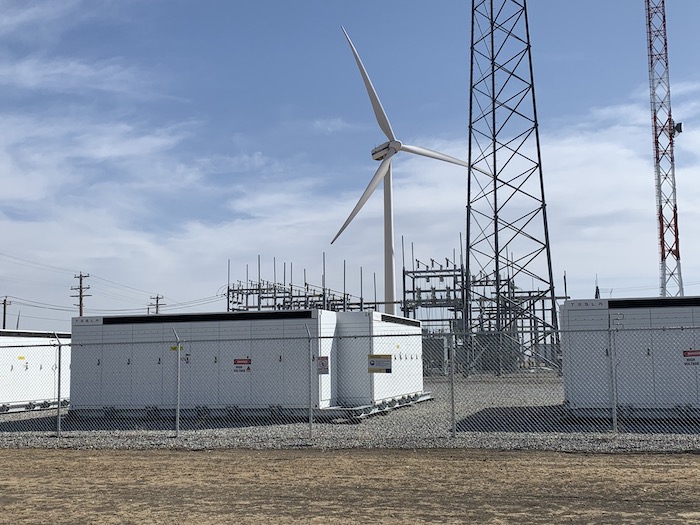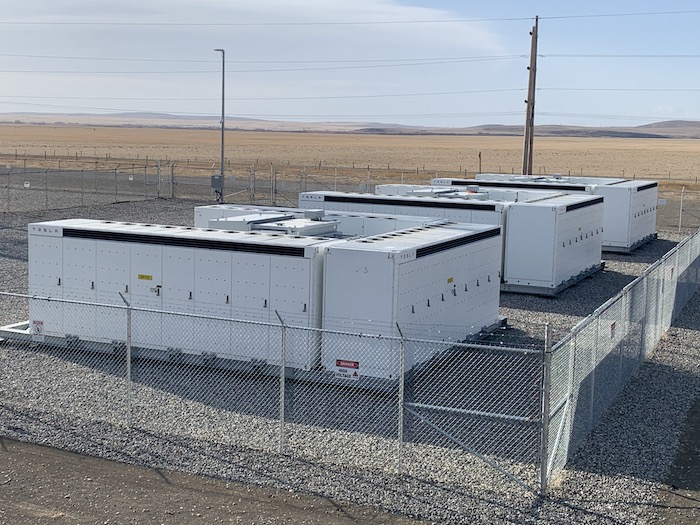
2022 #CCEawards Showcase: Alberta’s First Grid-scale Battery Energy Storage System
November 10, 2022
By CCE
“An impressive process of project management, given the regulatory aspects, to hook it to the grid.” – Jury
Category: Natural Resources, Mining, Industry and Energy
Award of Excellence Winner: BBA
BBA provided studies, designs, commissioning and interconnection services for WindCharger, Alberta’s first grid-scale battery energy storage system (BESS). Owned by independent power producer TransAlta Renewables, the facility captures and stores energy generated at the 66-MW Summerview 2 wind farm in Pincher Creek, Alta., then discharges power to the provincial grid during times of peak demand or low wind conditions. In so doing, it compensates for the intermittent nature of wind power and makes the grid more reliable.
By supporting decarbonization, this project has set Alberta on a course for a greener future. The facility officially began commercial operations in October 2020 with a nameplate capacity of 10 MW, a total energy storage capability of 20 MWh and two-hour charge time.
BBA’s multidisciplinary engineering team was actively engaged on-site, troubleshooting as needed, acting as an extension of the client’s team at all times and seeing the project through to completion.
A new power landscape
With a total capital cost of $14.5 million, WindCharger was the first major energy-storage project to be connected to the Alberta grid using Tesla‘s Megapack lithium-ion battery technology. The project’s novelty, magnitude and need to connect to an existing facility meant a number of technical and commercial challenges.
To prepare, BBA assembled a team of experts from its electrical, civil, structural and automation departments. Through rigorous communication and co-ordination procedures, this team successfully delivered feasibility and electrical studies; detailed engineering for all project stages; electrical equipment design, specifications, integrated controls, protections, commissioning and Western Electricity Coordinating Council (WECC) testing; designs for the foundation, piles and structure; control logic definition and implementation; telecommunications network design and integration; and data concentrator and screen page configuration. The team also recommended modular lithium-ion battery technology that would offer optimal storage density.
At the time, specific requirements for BESS-to-grid connections were still under development. This created challenges for BBA’s engineers, who fulfilled the roles of system designers and technical consultants for integrating energy storage through the Alberta Electric System Operator (AESO) connection process.
AESO is responsible for ensuring generators connect to the province’s transmission system in a safe, reliable and consistent manner. BBA worked very closely with AESO and Tesla to meet existing requirements while also developing approaches to suit the BESS equipment. BBA’s team facilitated conversations between stakeholders and provided technical expertise to support AESO in developing a new framework.
BBA’s next challenge was to produce designs that would comply with this new, as-yet-untested framework. With no rulebook to refer to, the engineers faced challenges in devising feasible and compliant solutions. WindCharger served as a test case for the new framework, helping to validate it and providing valuable lessons.
When the project was in the functional specification stage, AESO released its short-term market implementation requirements. BBA responded with adaptability to ensure design compliance. From start to finish, the interconnection process was completed in approximately 21 months, a major accomplishment given the extent of the ‘unknowns.’
Hitting environmental targets
According to the provincial government, electricity generation currently accounts for 18% of Alberta’s greenhouse gas (GHG) emissions, namely because of the use of coal and natural gas. Hence the focus on increasing electricity generation from renewable energy sources, including wind and solar. By transitioning to emissions-free power, Alberta hopes to limit the impacts of climate change, including more frequent droughts, floods and forest fires.
Southern Alberta is home to some of the world’s best on-shore wind resources, so the potential is tremendous. Once nearby generators levelize their output with similar BESS technologies, Alberta will be positioned to meet its clean energy goals without compromising the reliability of its grid.
WindCharger is already making a difference as a fully operational and profitable energy storage facility. Its batteries have the capacity to power the equivalent of all homes in Pincher Creek for 90 minutes.
Connecting to a brighter future
The WindCharger project has helped advance Alberta’s requirements for energy storage connections and enriched the expertise of local engineers working for and with AESO. Looking ahead, these combined gains will make it easier for renewable power generators to develop new BESS facilities. The result will be a greener, reliable energy grid.
This is particularly significant for Alberta. With limited opportunities to develop additional hydropower, the province needs to expand its reliance on wind and solar energy to transition away from fossil fuels. This shift will also help protect Alberta’s individuals and businesses from the volatility of fossil fuel prices.
Alberta’s First Grid-scale Battery Energy Storage System, Pincher Creek, Alta.
Award-winning firm (prime consultant): BBA, Mont-Saint-Hilaire, Que. (Sebastien Gregoire, P.Eng.; Martin Rheault, P.Eng.; Marc Durocher, Tech.; Behrad Biklikli, P.Eng.; Mario Gignac, P.Eng.; Marie-France Proulx, P. Eng., PMP; Jonathan Ma; Scott Fleming, P.Eng., PMP).
Owner: TransAlta Renewables.
Other key players: Tesla Megapacks (battery storage system), PTI Transformers (medium-voltage transformers).

